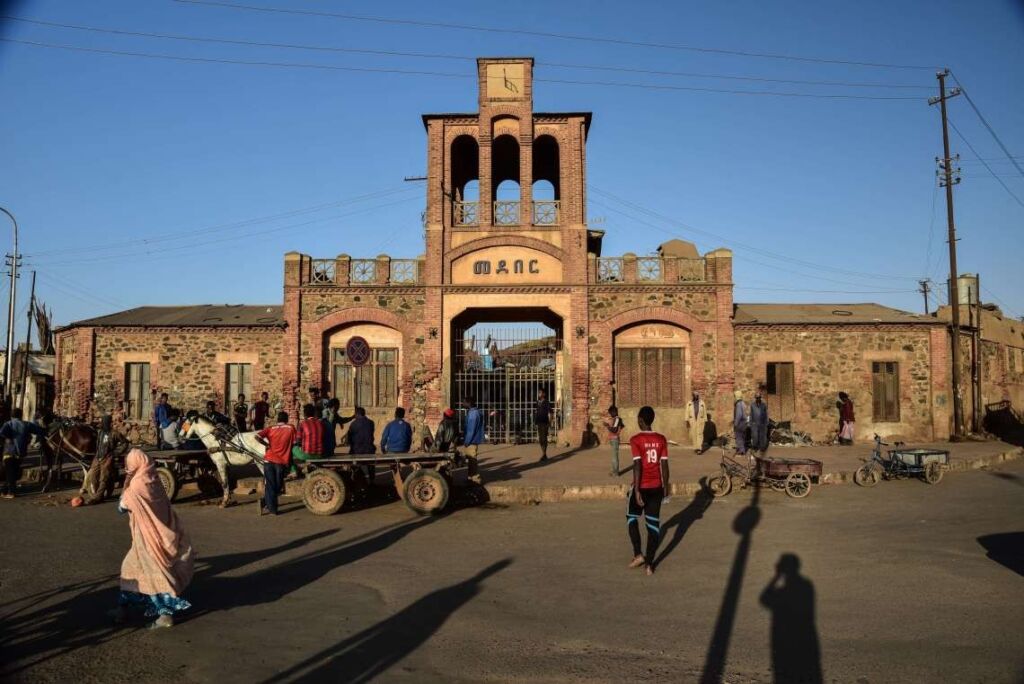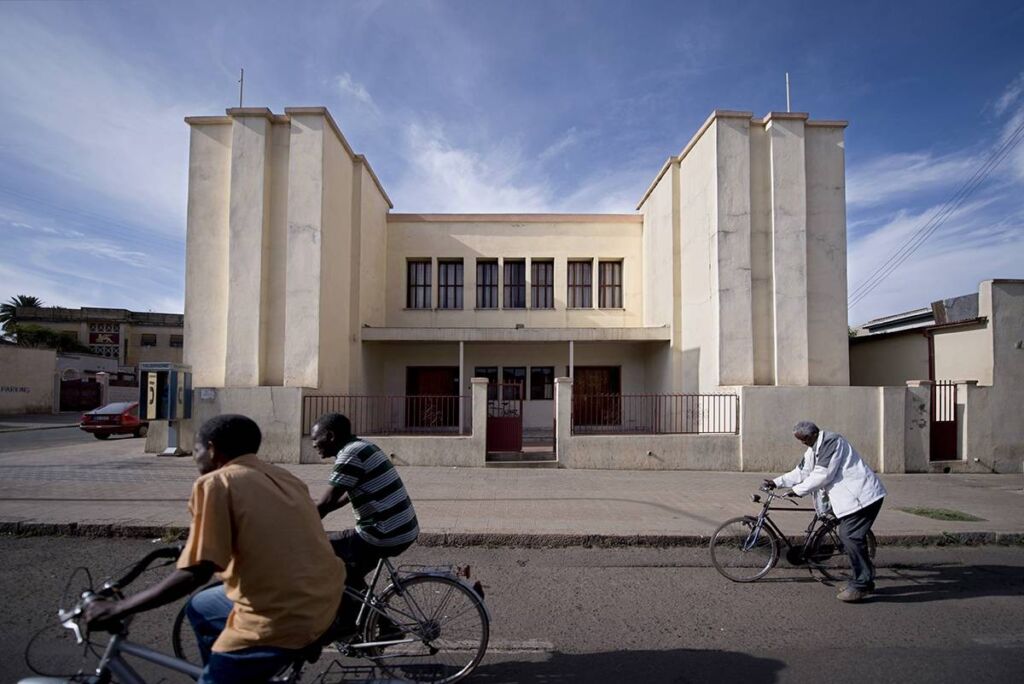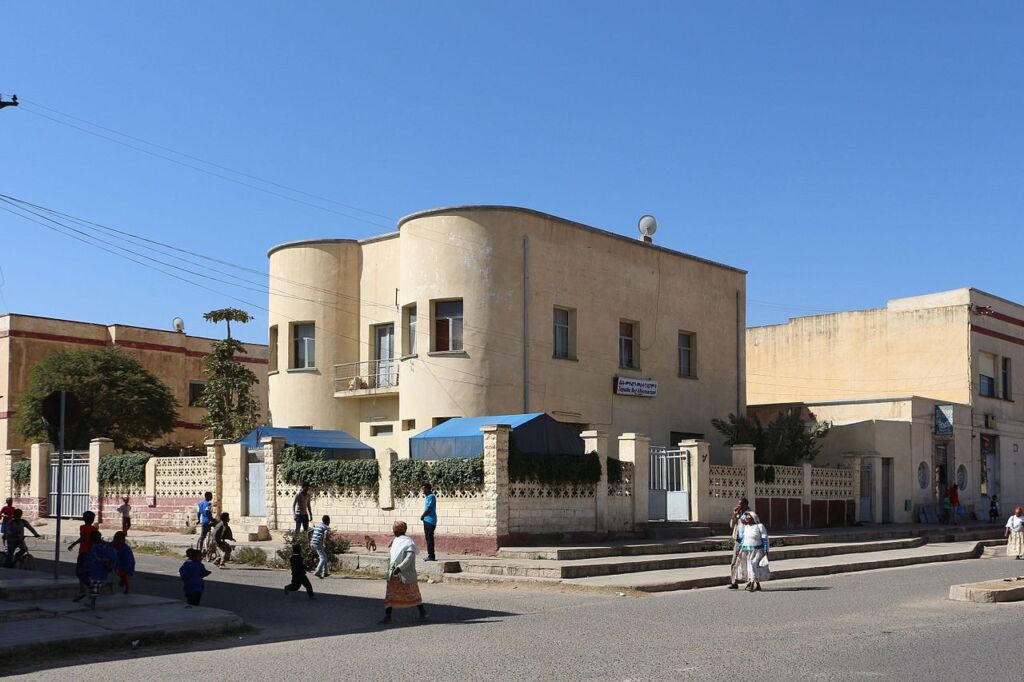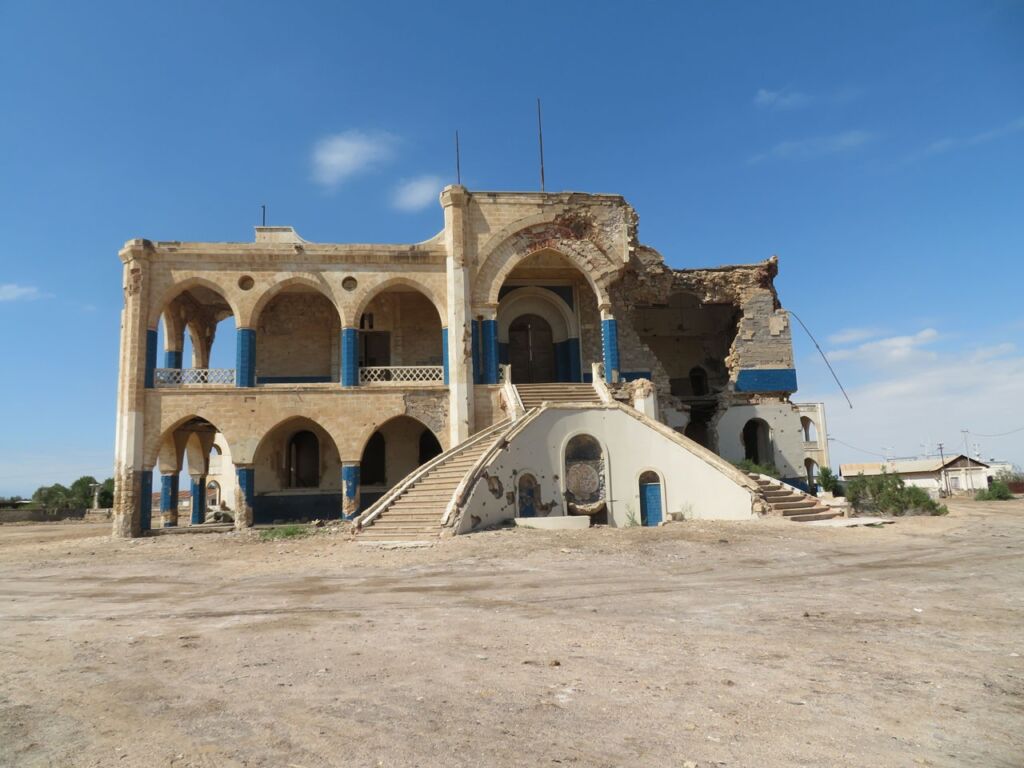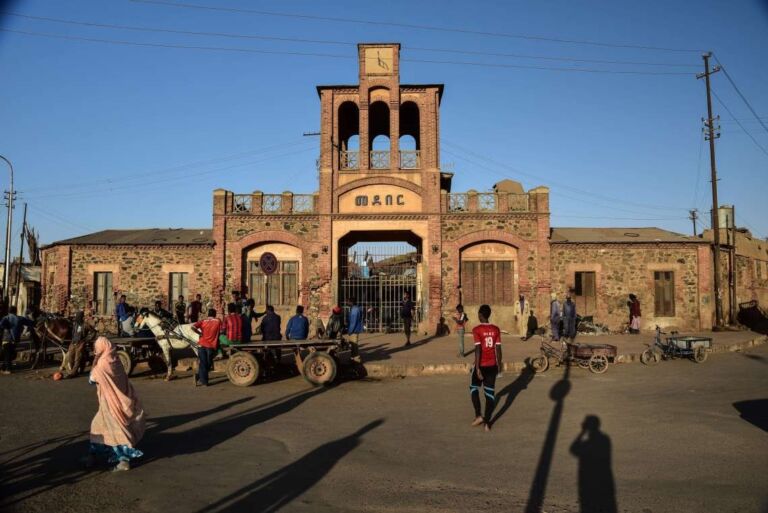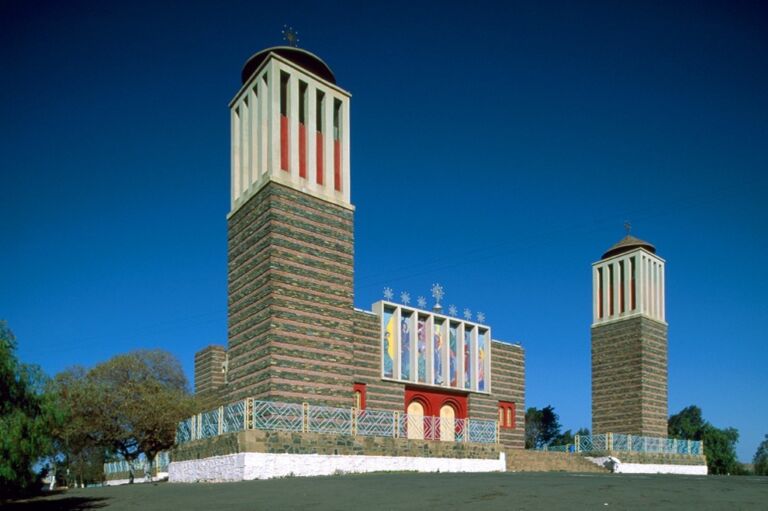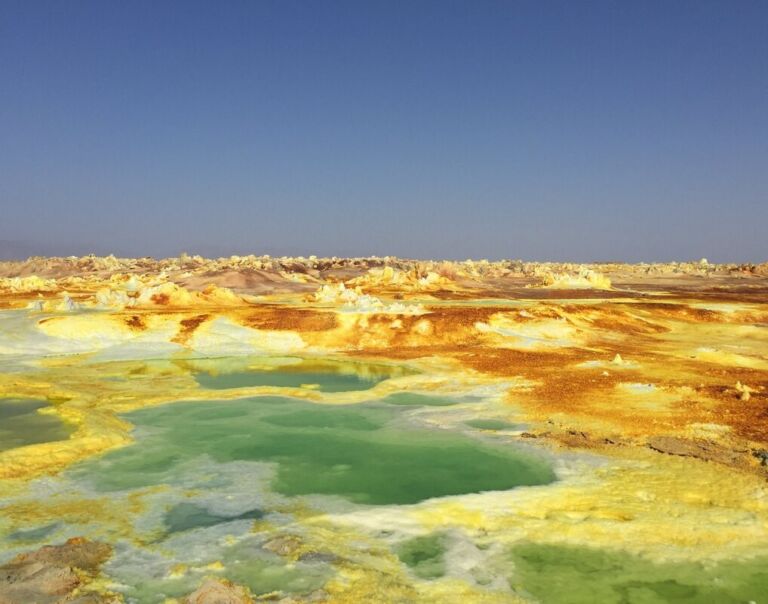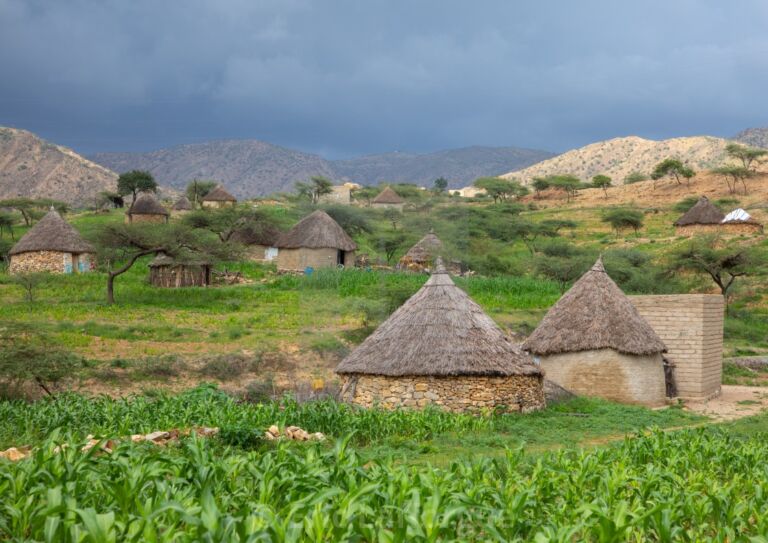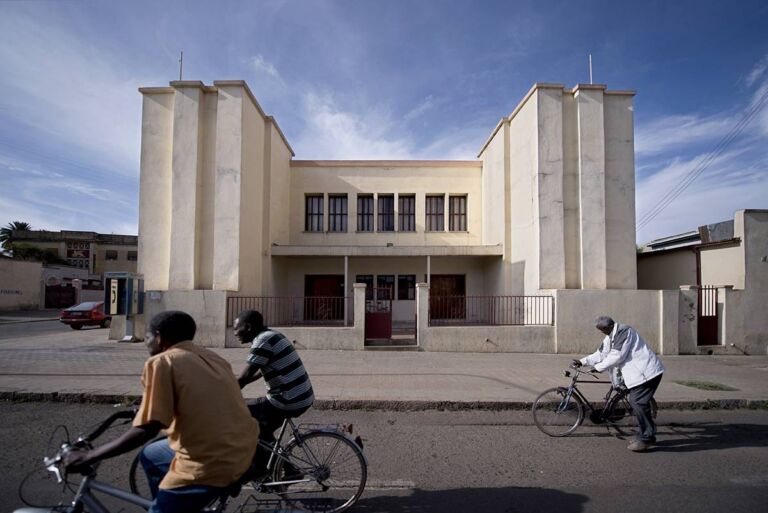Eritrea has slowly been opening up to the rest of the world and while the visa process still scares people away, it’s actually quite doable if you find the right travel agency and have some patience. What awaits you is an architect's fun park with exquisite examples of modernism, art deco and Italian fascist architecture unseen on this large scale anywhere else.
Eritrea is a dream for people who love architecture, culture and history and the capital Asmara, has the most intact collection of modernist buildings anywhere in the world and has finally been listed as a UNESCO World City Heritage Site. During the thirties, the Italian occupiers wanted to make Eritrea a futuristic utopia by experimenting with new styles and ideas. When they lost power over the country during the second world war, the construction-craze abruptly came to an end and Eritrea was annexed by Ethiopia. The modernist metropolis of Eritrea stayed almost untouched during the following decades and now provides a warm welcome for anyone wanting to learn more about this unique country.
First timers are blown away from the peaceful, friendly atmosphere, the clean streets, perfectly conserved buildings, amazing Italian architecture, the great food and the best coffee there is. Coming to Africa’s ‘Little Rome’ as it was called by the Italian occupiers back in the day, will make you feel like you’re on a film set. Don’t forget to bring your camera, because you’re going to have tons of photo opportunities!
Day 1: Transportation to the hotel and free evening in town.
Day 2: The main attraction in Asmara is of course the World Heritage listed colonial Italian architecture which can be found all over the city. When the Italians were still around, they got obsessed with constructing buildings and building a little Italy in Africa. The city was well-planned and has palm-lined streets and beautiful examples of modernist, fascist and art deco architecture. The center is full of cafés, bars, shops and old cinemas with plenty of photographic opportunities.
You will meet up with our local English/Italian speaking guide who will show you around in the city center telling you more about its history and with a strong focus on the architecture and Italian remainders. We’ll also have a stop to have a perfect macchiato and show you our favorite gelato and pizza places!
Day 3: Today we’ll go to the village of Ghinda and the town of Dekemhare, starting with our first stop in Ghinda, which lies in the middle between Asmara and Massawa.
Ghinda is a small village in the middle of a green, fertile valley which has a microclimate with more rainfall than the areas outside the surrounding mountains.
Along the river and hills we find many terraced fields on the hills where vegetables and fruits are grown. We’ll have a stop to show you around, see the market and give you a chance to have a bite or a drink.
Afterwards we’ll continue our way to Dekemhare, south of Asmara, called the Golden City. It was originally meant to be an industrial center and a transportation hub, but got largely destroyed during the independence war. We still find remnants of this period such as old factories which just like everything the Italians built in Eritrea, all have a unique style. Because of the gentle climate the town was favoured by the Italians where they had their vineyards to produce wine next to cultivating other fruits and vegetables. Downtown we find markets, shops, cafés and several interesting pieces of Italian architecture worth visiting.
Our final stop is the town of Segeneiti, where we’ll have a look around in the small town center with its charming church and we’ll then have a hike in the area to find the giant sicomoro tree. After our hike, it’s time to go back to Asmara!
Day 4: Today we’ll go to Massawa, a port city on the Red Sea, with about 38,000 inhabitants and used to be the country’s capital until 1897. It once was one of the most important ports around the Red Sea. The city is located about 2 meters above sea level on two islands (Massawa and Taulud) off the coast and on the mainland. The historic center of Massawa is located on the outermost of these two islands. Massawa is one of the hottest cities on the planet, so it’s important to plan your visit well and avoid the hottest period. It’s best to book between November and April.
Because of the different colonisers the city has known, we find Portuguese, Arab, British, Italian and Turkish remnants in the City of Islands. The city used to be a cultural hub which drew artists and intellectuals and was once the most important city under the Italian rulers who connected Massawa to Asmara by railroad. We still find a lot of Ottoman influences in the city, especially on the architecture as well as several buildings and structures which were developed by their successors, the Egyptians and finally a lot of beautiful Italian houses. Today we’ll be showing you around the old town, the most notable buildings as well as the coastline. We’ll also show you a good place to have lunch.
Day 5: After breakfast we’ll go back to Asmara. End of trip.
Includes:
- Accommodation for four nights
- Transport to all sites: public, taxi or private car
- Professional local guide: English or Italian
- All activities as described and entrance fees
Doesn’t include:
- Meals and drinks






